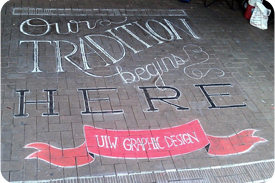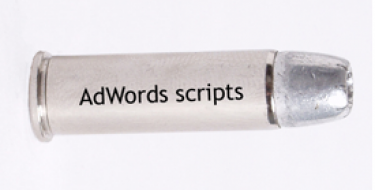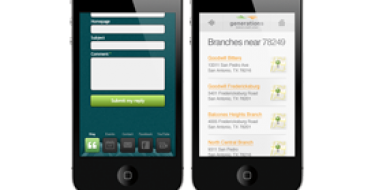Applying Hands-on Design Digitally
Coming to an end of my bachelor’s degree in Graphic Design, many of my classmates and I get ask the same question, “What are you going to do after you graduate?” Many of us respond “print” or “web.” Of course if we want to pay off our student loans a little faster, web design would be the way to go. With media technology rapidly growing there is a demand for going digital.
Create with our hands
And yet somewhere deep inside every Graphic Designer what we are really passionate about is print design. Why? Because print design is more hands-on than web. Even print design can be digitally rendered to make vectorized images and modify typefaces. The problem many of us encounter is that we love to create with our hands and Graphic Design is mostly using programs to create a visual design.
Incorporating hand skills
A lot of designers have specialty skills outside of design, things like drawing, photography, sculpture, crafting, screen printing, calligraphy, painting, etc. Again, more hand-ons skills. By using handskills we can produce the most unique work, like a signature.
Although, why do we think of graphic design and these other artistic abilities as separate, when these can surely be incorporated into our graphic style.
For example:
- Using your own photography on a website
- Instead of using an existing typeface you can use calligraphy skills to vector the typeface
- Use your painting skills to create a textured background for a website, poster, on packaging.
There is a number of hand skills you can incorporate into graphic design.
Creating a niche with your hands
Transitioning from a student to a professional can be nerve-racking. As students, we have not been in the design field for a long time, so we are competing with professionals who have already found their niche in design. We are still struggling with finding our style since we have not had as much practice or feedback. Using a skill that we have a strong grasp on can help separate the newbies from other designers.
For example, I have good drawing skills, at least I think I do, so I need to start incorporating this into my portfolio and develop a style with my sketching ability. My drawing skills can progress into typography. Creating my own letterforms through sketching and vectoring them. Even creating Chalk Art, which is becoming super popular.
I have been inspired by numerous of letterers/calligraphers on Instagram, including Neil Tasker, Jason Carne, and Ken Barber. Good Type and Typism are other examples of creating type using hand-skills. My next adventure is to learn how to wood-carve in December.
Next semester we will be creating an identity and piecing our portfolio together and I would really like to craft together my own portfolio case by wood-carving bamboo. Maybe create a manifesto of type and carve it along with my logo. I definitely want my cover to be unique from other designers who are ordering black or white acrylic cases. This will hopefully help me gain credit with whomever I am showing my portfolio to. This will help to enhance my future designs and show good craftsmanship to future clients.
Take a look at web designer Andrew McClintock’s blog post about how he uses his handmade skills in this digital world.
MONTHLY MARKETING INSIGHTS.
Get thought-provoking and actionable insights to improve how your firm makes a connection with your customers.





LEAVE A COMMENT